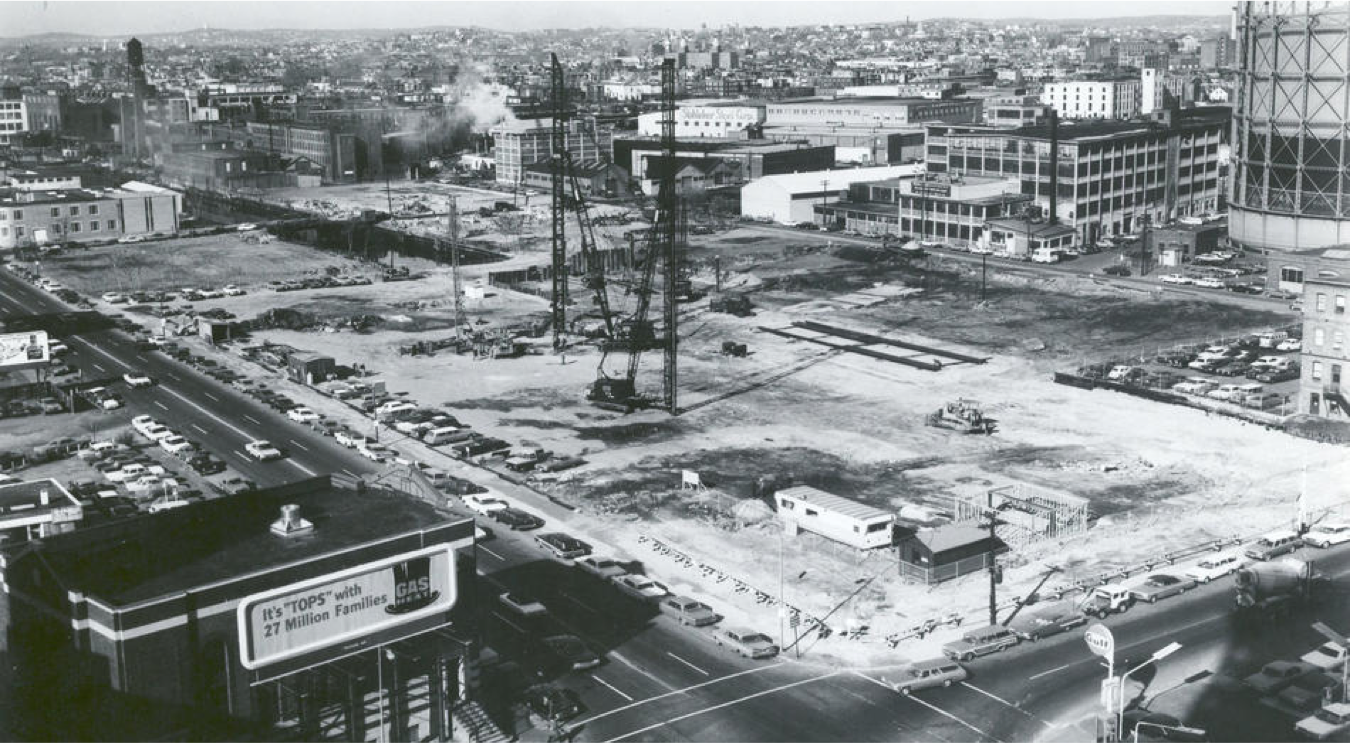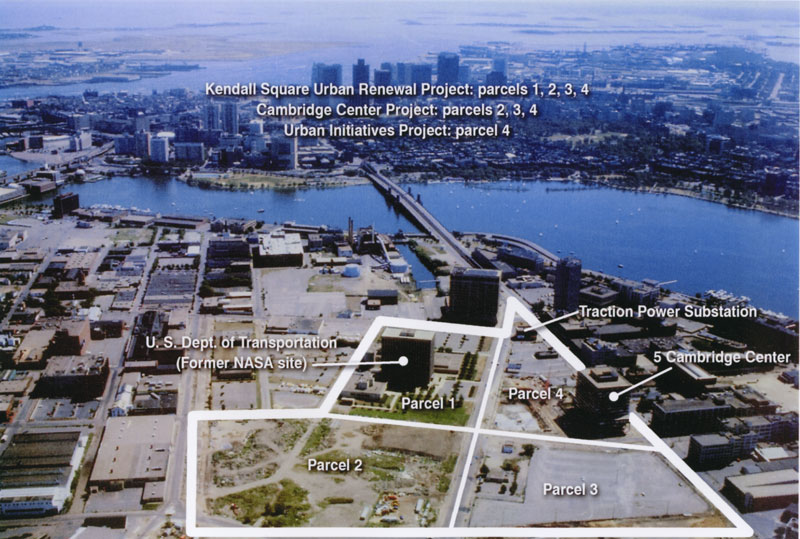Cambridge Civic Journal Forum
February 13, 2014
MBTA Role in Cambridge Center Project – Kendall Station Urban Initiatives Project, 1979-1989......
The 1970-77 period involved two major activities:
(1) The execution of land preparation activities in order to transform a 43-acre industrial slum into vacant land for new construction. The activities required the acquisition of 70 parcels of land, relocation of the Broad Canal to an underground water system, relocation of nearly 100 businesses, demolition of 50 buildings, construction of infrastructure, and formation of new traffic patterns of circulation.....
(2) The resolution of planning issues in order to amend the Kendall Square Urban Renewal Plan to designate new reuses for the land. Activities included negotiations between the CRA, DOT, and the U.S. General Services Administration to retrieve the rights to develop 10 acres of vacant land left behind by NASA; and rejection by the Cambridge City Council of four redevelopment plans prepared by a task force comprised of representatives from a cross section of Cambridge organizations working with the CRA.
In 1976, the CRA engaged the Urban Land Institute’s (ULI) advisory panel services to review the Kendall Square Project and propose ways to help break the multi-year planning deadlock. Among the "Findings, Conclusions, and Recommendations" of the ULI panel:
• Only a few properties in the country have a broader array of locational advantages as the Kendall Square area and the opportunities associated with the Kendall Square Urban Renewal Project: Cambridge Center is a unique opportunity area, one that should be reserved to maximize its locational advantages.
• The MBTA’s Kendall Station subway is one of the more spectacular assets affecting the redevelopment potential of the CRA’s Cambridge Center project (emphasis added).
• Attracting developers will not be easy. Citizen concerns, political pressure, economic uncertainty, the absence of a united and strong development process, high taxes, environmental constraints, contentious political climate, and congested surface transportation have combined to create a credibility problem with the real estate development community relative to the City of Cambridge. With few exceptions, the lack of credibility has been a severe restraint to real estate development in Cambridge.
• These development problems are such that all but the most determined developer, the one who perceives a very close relationship between locational advantages and development opportunities, will be deterred from coming into the community (emphasis added).
Engaging the ULI greatly helped to break the planning deadlock because the panel’s expertise gained the confidence of the Cambridge City Council and the CRA. The panel advised the CRA to make extraordinary efforts to impress potential developers by efficiently completing site preparations and all major pre-physical development activities. The CRA responded by removing legal and technical impediments to development by completing an Environmental Impact Statement; securing plan and zoning amendments; carrying out a $7-million public improvements program; and implementing traffic circulation plans, such as widening Binney Street to provide direct major access to Memorial Drive.
In 1977, Cambridge City Council approved a mixed-use development plan for the Kendall Square Urban Renewal Project. For marketing purposes the name Cambridge Center was adopted to refer to the 24 acres in the Kendall Square Project Area separate from the land occupied by DOT. In 1978, the CRA invited proposals to develop Cambridge Center, and in 1979, selected Boston Properties as the initial developer.
Phase 2. 1980-Present. The objective was to sell the vacant land created during Phase 1 for private development.
The CRA and Boston Properties executed a Development Agreement which provided that the CRA would sell land to Boston Properties in stages after approval of development plans; and Boston Properties was required to start construction of an office building within seven months of signing the agreement.





